Wanting to experiment with a variety of camera lenses means you're a curious and determined individual. It's helpful to familiarize oneself with camera equipment and to understand the pros and cons of using different kinds of tools. Such knowledge comes in handy during artistic conversations and general observations. However, it's equally important to make the most of the equipment you already own.
Whether you have an overflowing amount of cameras or a single lens you've been using for years, you can take exceedingly impressive portraits. Read and find out how you can make the most of the affordable 50mm f/1.8 lens for shooting portraits.
Canon's 50mm 1.8 prime lens is a perfect example of an affordable yet powerful lens. Compact and lightweight, it can be taken to – and used in – any location. With a maximum aperture of f/1.8, it's capable of capturing great portraits in more challenging lighting conditions. Even if you don't use it with a full frame camera, it'll provide you with distinct and interesting results. If you expect great lenses to come with an intimidating price tag, you're in for a treat; at the moment, the canon 50mm 1.8 can be purchased for around $125.
Note: a 50mm lens on a cropped frame camera is the equivalent of roughly 80mm.
Every camera body and lens comes with a set of both appealing and disappointing features. In this article, we'll ignore the cons and focus on the many positive sides of the Canon 50mm 1.8 lens. If you're a portrait photographer who feels an urge to take impressive photographs with an affordable lens, read on!
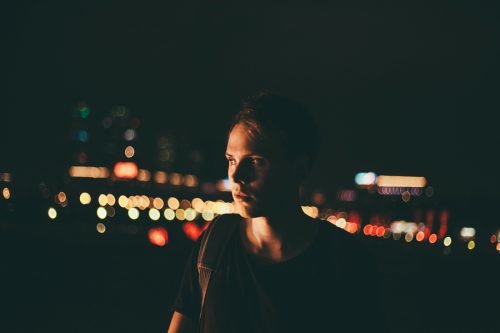
Here Are Some Tips on How to Use a 50mm Lens for Portraits:
Don't Be Intimidated By High ISO Numbers
The 50mm 1.8 lens is amazing at capturing great photographs in the dark. Even if you're using a crop frame camera, your powerful lens will allow you to safely experiment with a wide range of ISO numbers. To successfully take well-lit shots in the dark, you need at least one source of light. This can be as practical or as imaginative as you wish. A few examples of handy light sources are:
- a torch
- a phone
- street lights
- car headlights
Grain will inevitably find its way into your pictures as you experiment with higher ISO numbers, but it won't ruin the overall quality of your shots. If you're a fan of film photography, a generous amount of grain will satisfy you. If you're unhappy with the amount of noise in your results, editing programs like Photoshop and Neat Image will allow you to remove a significant amount, resulting in clearer and smoother shots.
Whether you enjoy shooting in dark locations or not, experimenting with night time photography using a 50mm 1.8 lens will give you the opportunity to add refreshing photos to your portfolio.
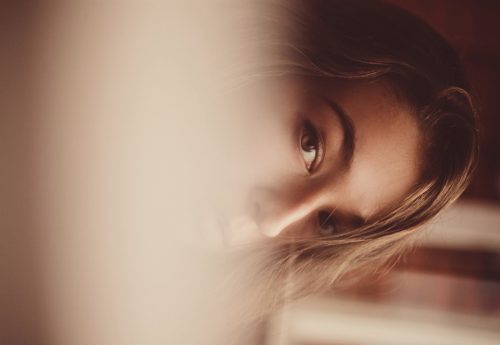
You Have Everything You Need to Enhance the Simplest Portraits
Simple portraits might seem quite boring at times, but don't let this observation prevent you from taking the best possible photos. If you observe the works of photographers like Alessio Albi and Anastasia Volkova, you'll notice the subtle yet intelligent ways in which they enhance a seemingly simply photograph. This isn't magic, even though imagination – when used to its fullest potential – is truly magical. These photographers make the most of easily accessible things like hair, leaves, hands, and even kitchen utensils.
But what do they do with them? They use these objects to create blurred foregrounds which complement their subjects' features and create ethereal-looking portraits. You have absolutely everything you need to create photos that are just as compelling as the ones mentioned previously.
Here are a few things you can use that are probably already in your home:
- kitchen utensils, such as spoons and forks
- bottles
- curtains
- paper
Since the 50mm 1.8 lens has a maximum aperture of f/1.8, it's possible to create perfectly blurred results while keeping your subject in focus. Simply hold any object in front of your lens so that it partly covers it, and voilà! Your simple portrait will instantly look more interesting.
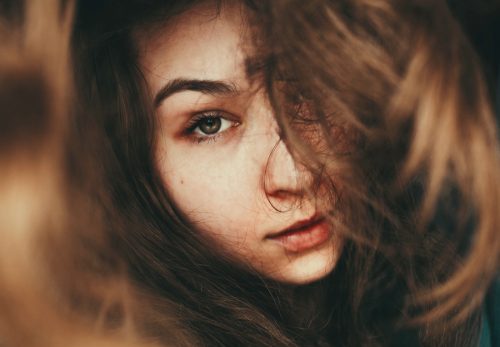
Keep Your Focus Sharp to Get Dreamy Results
An aperture of f/1.8 will allow you to take sharp portraits that stand out from their backgrounds. The closer you get to your subject, the dreamier everything will get. While close ups might seem unflattering due to lens distortion, it's possible to take visually appealing images, especially with a crop frame camera.
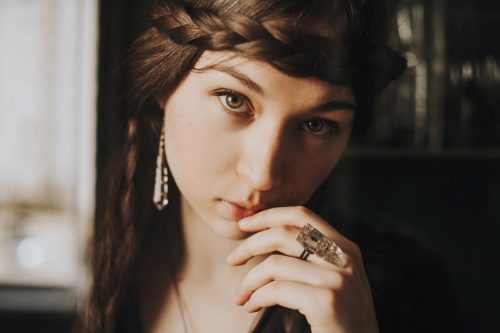
How close can you go for portraits with a 50mm lens? The 50 mm lens is designed to deal well with distortions. You can get fairly closer to your subject to make decent portraiture of up till half length.
Taking photos of your subject from a distance will result in equally dreamy shots. The 50mm 1.8 lens has a flawless way of making the most of intricately decorated locations. Photographing your subject amongst branches or complicated patterns, for example, will result in blurred backgrounds that are reminiscent of vintage lenses. If you experiment with a variety of interesting backgrounds whilst keeping your subject in focus, you'll get eye-catching results all the time.
Try to Minimise Distortion
Although the 50mm lens does not have much distortion issues, if you think distortion is a problem, then it is better to not compose the image with elements or parts of your subject like hands, shoulders towards the edge of the frame because distortions start to show towards the edges of the frame. Leave enough space around your subject keeping the subject at or near the centre of the frame, so distortion is not noticeable. Most distortions can be corrected while post processing.
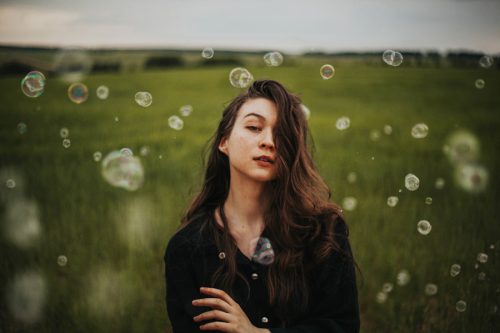
Maintain the Right Distance From the Subject
A 50mm lens has a field of view comparable to human eye. So, continuing on from the distortion issues we discussed above, maintaining a certain distance between the camera and the subject will also help reducing distortion.
Do not get too close to the subject, but beautiful full length, half length or 3/4th length portraits can be made with 50mm lenses. A 50mm lens isn't really a good choice for headshots and head and shoulder portraits as distortion can ruin the model's facial features.
Change the Perspective:
The distortion in the 50mm lens can be used creatively to enhance the subject or the looks in front of your camera. Since the lens slightly distorts the subject, you can change the shooting perspective by shooting a little lower than your subject so it makes them look a bit taller, slimmer and a bit dominant. However, this depends on the height and body shape of the subject and this technique will not work all the time. You can shoot various angles for different subjects and choose the one that looks the best.
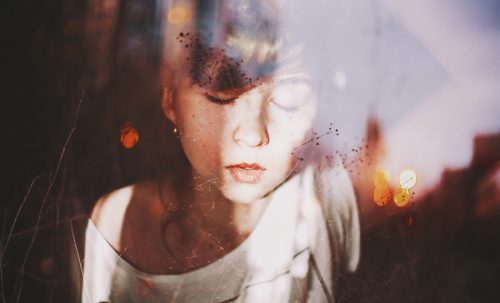
Embrace Movement in Your Shots
Documenting moving people can be a challenge. As a portrait photographer, you might find it slightly intimidating due to how distracting certain movements can be. The 50mm 1.8 could drastically change your idea about this topic.
As a fast lens, it's capable of freezing the most subtle movements to create enchanting portraits. This is particularly useful for photographers who enjoy taking dramatic portraits outdoors.
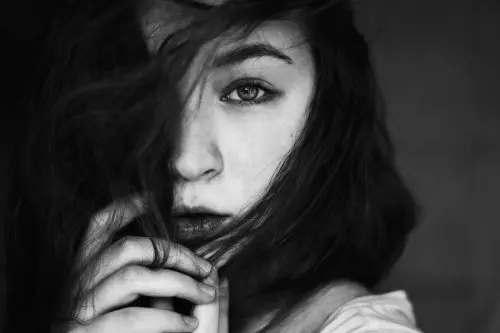
To Photograph Movements Sharply, Shutter Speed Must Become Your Friend
Shutter Speed: this determines how quickly your camera captures a movement. The slower the shutter speed, the harder it'll be to sharply capture moments in action. Slow shutter speeds are usually above a second (e.g. 1/4 of a second), while faster shutter speeds are a fraction of a second (e.g. 1/500 of a second).
You can control the shutter speed by setting the camera to Shutter Priority mode, which will automatically change the aperture depending on the shutter speed you choose. An alternative mode is Manual mode, which will give you full control over both shutter speed and aperture.
Always follow the reciprocal rule for shutter speed where it is always advised to have shutter speed greater than (1/focal length) for handheld shots, taking into account the crop factor of the sensor as well. So, on a full frame camera, for the 50mm lens, the shutter speed should be greater than 1/50th of a second, and for an APS-C Canon camera, the shutter speed should be greater than 1/80th of a second.
Especially with movement in the frame, it is safe to stick with (1/(2 x focal length)) which is 1/100th of a second for a 50mm lens on a full frame camera. Again, the shutter speed needs to be adjusted depending on how fast the movement is. For faster movements, you will have to go upto 1/250th of a second or even faster.
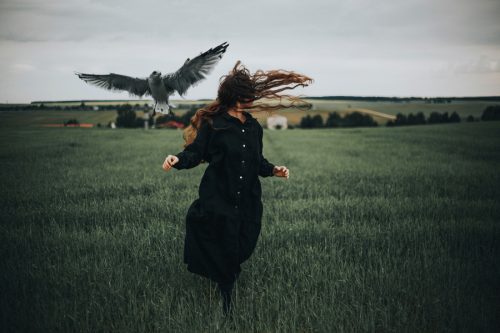
For a compact and affordable prime lens, the Canon 50mm 1.8 is a valuable treasure worth working with for years. If you keep your imagination fresh, this lens won't cease to be a trustworthy and creativity-fulfilling companion. Remember to experiment with objects, apertures, ISO numbers, and shutter speeds as much as you can. As long as you don't underestimate the power of this handy little lens, you'll always get impressive results.
Happy shooting!
Further Resources on Portrait Photography
- 7 Tips Your Camera Manual Never Told You About Portrait Photography
- Portrait Inspiration On LightStalking
- The Fundamental Considerations of Basic Portrait Photography
- Portrait Photography Ideas and Techniques for Shots That Will be Cherished
- Get Started With The Art Of Portrait Photography
- 6 Fundamental Composition Techniques That Will Improve Your Portraits
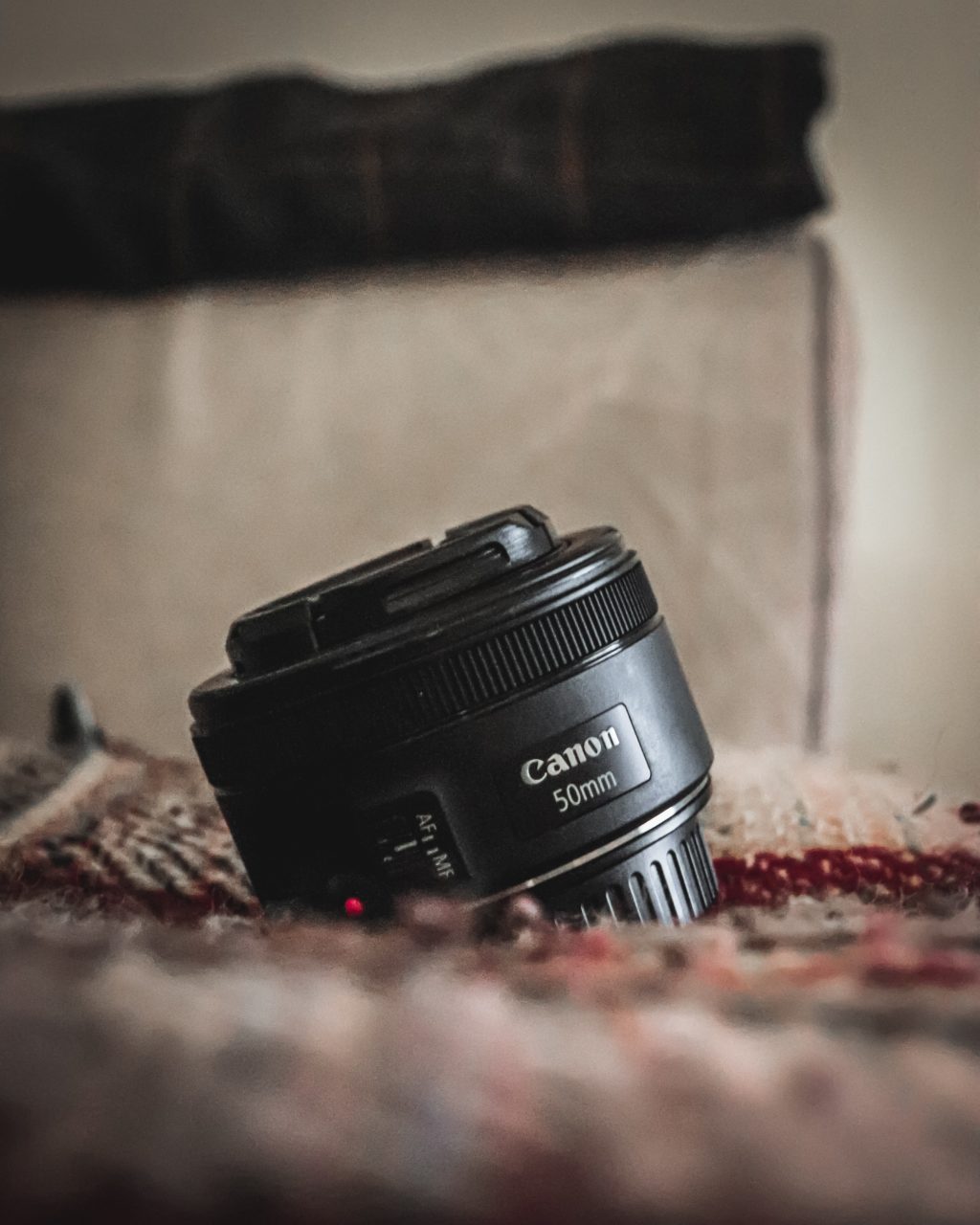

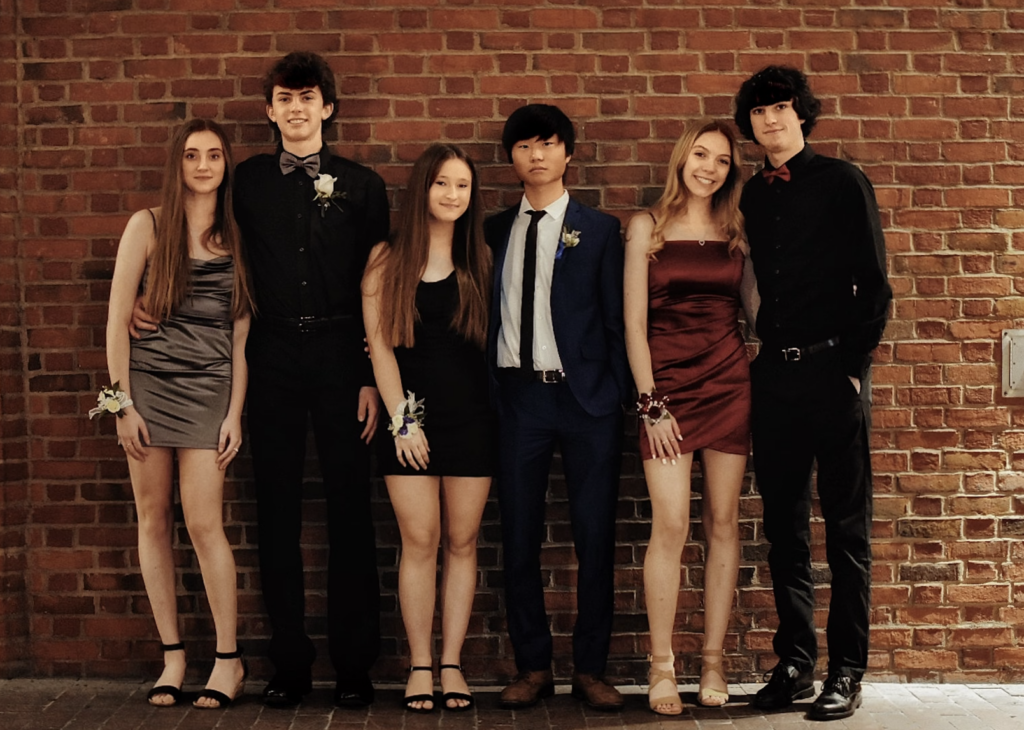
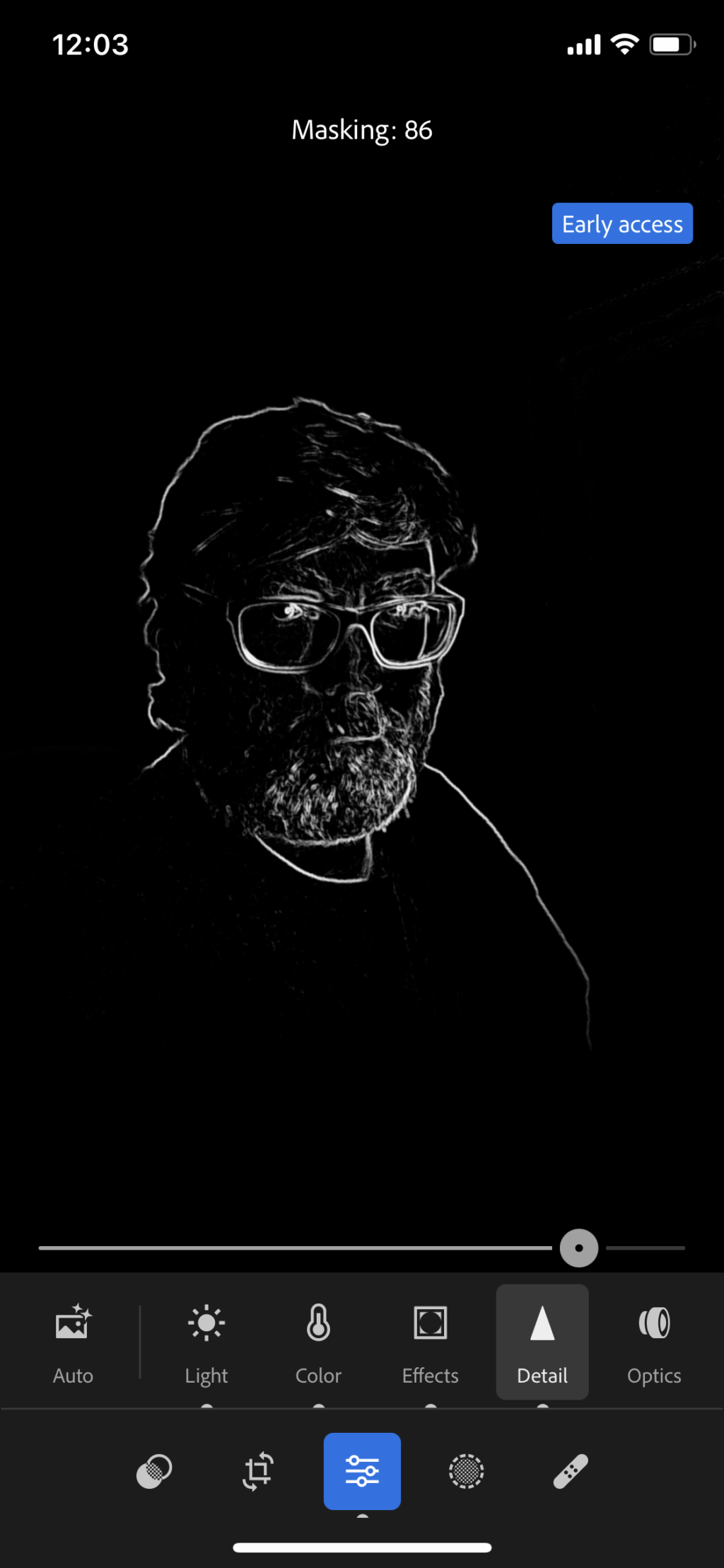
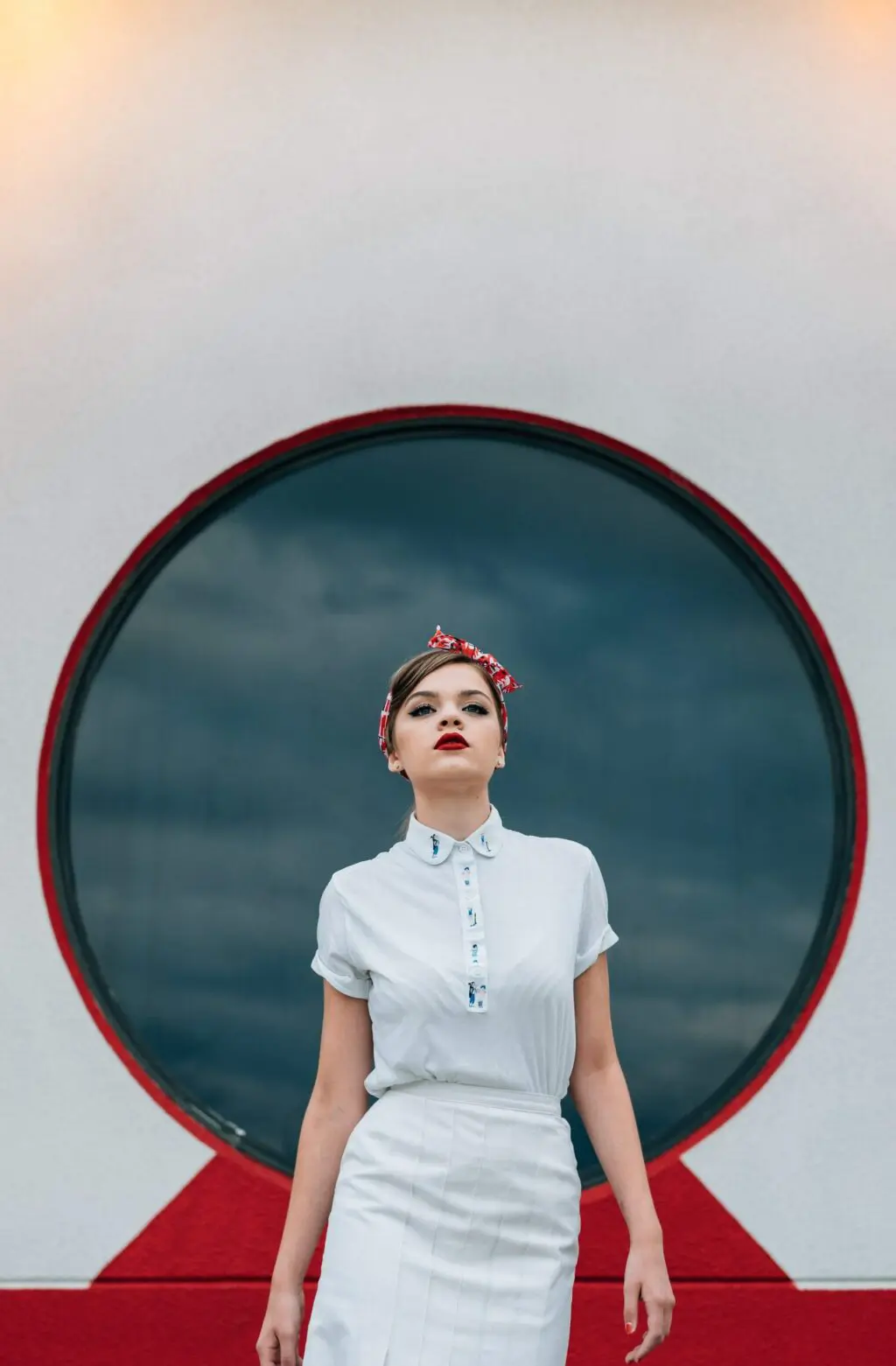
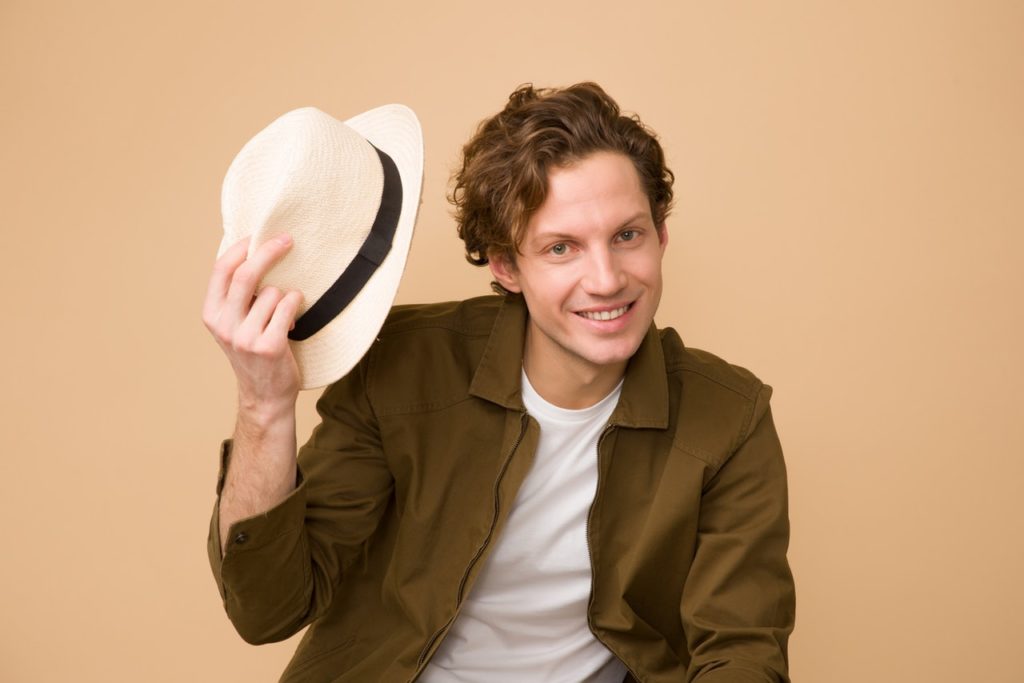
5 Comments
“Slow shutter speeds are usually above a second (e.g. 1/4 of a second),”
while 1/4 is a ‘slow’ shutter speed; it is still a fraction, and less than a second…
How is 1/4 of a second, “above a second”?
It’s not. What he is saying is that 1/4 second is considered a slow shutter speed for a couple of big reasons: Many photographers cannot hand-hold a shot with a .25 sec. speed without showing camera-shake in the photograph. They just aren’t a steady enough platform. So it’s a “slow” shutter speed.
Roughly speaking, ANY shutter speed slower than 1/125 of a second is considered a slow shutter speed because of the high risk of camera shake or the subject’s movement ruining the sharpness of the shot. 1/125 and faster will stop most motion in the photo. But that may not be what you want…
Shots of a second or more are S-L-O-W speed. motion is blurred. Low light situation may require it. You need a tripod or some kind of bracing to take a shot 1 second long or longer. Otherwise you will certainly have an unsharp photo as a result. Your heartbeat alone will impart a shake to your camera at anything that slow.
He’s absolutely right. I picked one of these up at a thrift store. I continue to be mightily impressed by the quality of images it can capture. .
The Plastic Fantastic also is great with an extension tube, because it is so light.